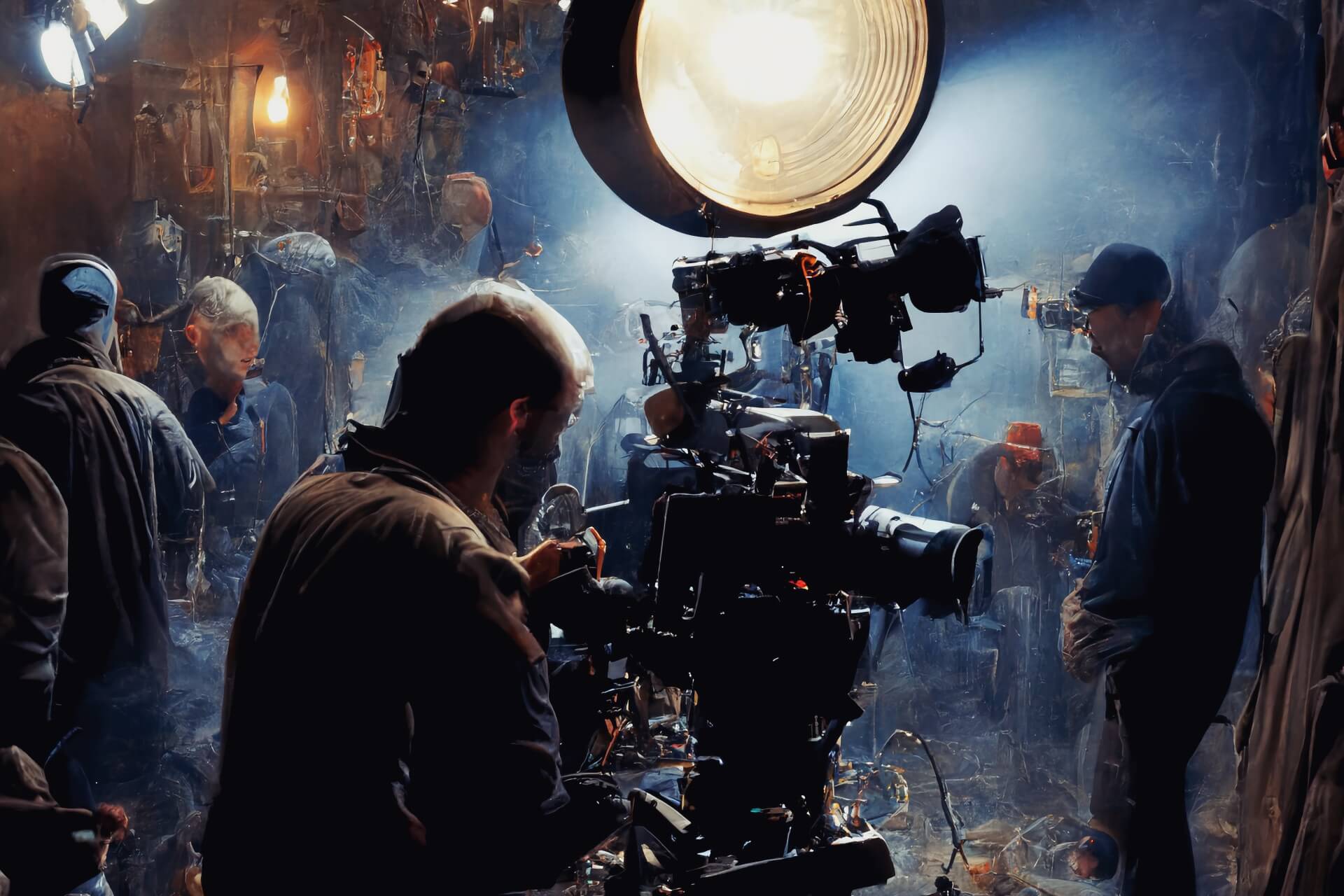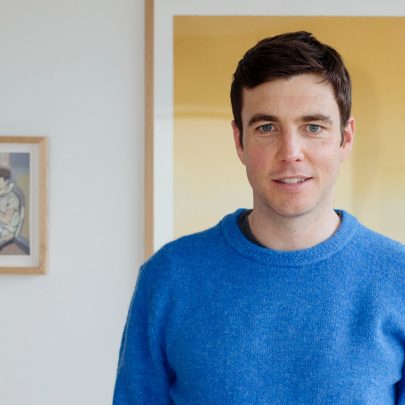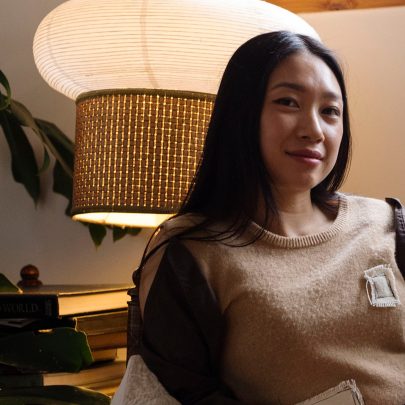Jun 1, 2023 Film & TV
Emma Slade has just got back from the gym and is describing the struggles of film financing. “I can’t emphasise how difficult it is to get the money together to make a new project.” The independent producer of films such as Nude Tuesday, The Justice of Bunny King and The Changeover observes how everyone always focuses on the shoot, but really that’s just a small part of a massive process. “It takes years to get a film up and to get financing for it. That’s why every independent film that has ever been made is a miracle.”
It’s true. New Zealand film producers make the impossible possible. They are the giant tunnel-boring machine that’s currently creating our City Rail Link; a solid rock face could appear in front of them at any moment and they would still grind their way through. Of late, those rock faces have taken different forms: Covid-impacted distribution models, a static investment level from the New Zealand Film Commission (so, declining with inflation) and increasingly risk-averse buyers. In addition, the positive production boon of large international projects attracted to New Zealand is tempered by the competitive and inflationary landscape they create.
Aside from tenacity, all good producers must speak two languages — the language of commerce and the language of art. On the one hand they must protect, elevate and translate a creative vision. On the other, they must sell that thing.
There’s lots of jargon in filmmaking and the financing phase is no different. ‘Packaging’, ‘going to market’ and ‘What are your comps?’ all trip off the tongue from Berlin to the Croisette. ‘Comps’ are comparable films used to approximate the financial success of the one you’re selling; ‘going to market’ is the process of selling your film to potential financiers; and in one of the most common sales processes, a producer ‘packages’ the film project to pitch it to sales agents and distributors. (A sales agent sells your film to distributors in different global territories. A distributor sells your film to cinemas and other platforms within their territory.) A film’s creative package consists of any and all creative elements: script, director and attached cast.
One of the most crucial aspects of the film package is ‘name’ cast. It’s “a critical piece of the puzzle”, Slade says, if you want to make films of a certain budget level and also ensure your film travels beyond New Zealand shores. “For the projects I make, having bankable stars is really, really important.”
A film budget is less a representation of how much a film costs to make, and more a sign of market value. Recognisable names are what makes the industry go round and every name is worth something. And that’s not metaphorical — sales agents set estimates of how much they can sell a film into different territories for, and those estimates are largely driven by the value of the on-camera names attached. This is what it means to be a bankable star.
And how hard is it to find those bankable stars? “Extremely, extremely difficult. It’s one of the hardest parts of the process,” Slade says. “I remember harassing [a UK distributor] about why we needed to have a certain level of star — someone who’s going to ‘move the dial’, as they say. I was exasperated because I was coming up with what I thought were great people, but ‘No, I’m sorry, they don’t move the dial’.”
Jill Macnab is the general manager at independent New Zealand film distributor Vendetta Films and one of the few women buyers working in distribution — a highly male-dominated industry. She’s also a producer in her own right for the company’s production arm, and brings these two different perspectives to the issue. “It’s really interesting when I sit and speak with directors and writers — and even some producers — who don’t understand how that hierarchy works on the international market as well as I do, because I’m just living it every day as a buyer on the acquisition side,” she says. “It’s incredibly frustrating for people to hear that someone like Melanie Lynskey even, who is one of our most successful actors, and a wonderful actor, may not get a project across the line financially.”
It’s important to mention that while the screen sector is an ecosystem, film and television operate within different financing and distribution structures and each have their own lexicon of bankability. When it comes to film, everything is dependent on budget size. A $2 million film doesn’t necessarily require gold-plated stars. As your New Zealand film budget climbs above $5 million, it requires names with increasingly more heft. “We’ve got a feature film project that has a $10-million-plus budget. And basically it would be impossible for us to finance that with solely New Zealand cast in there,” Macnab says.
The effects of this market-led pressure go both ways. It means New Zealand producers are driven towards stories with international casting opportunities as a priority. But on the flipside, it imposes an implicit budget cap on many New Zealand films that are important culturally but where an international casting would not make creative sense. Films that contain entirely New Zealand casts will simply not attract greater market finance — the ‘hard’ money.
Producers are aware this double bind is not ideal. “Yeah, it sucks,” Macnab says. “It would be wonderful to have more actors that are bankable in the way that we need them to be.”
So if cast is a critical film financing tool, and if one is looking with a long-term lens towards the growth and health of our screen sector, it prompts the question: are we intentionally growing career pathways to not only create a sustainable workforce of New Zealand actors but also ensure — dream of all dreams — bankability with a New Zealand accent?
Equity New Zealand, the actors’ union, doesn’t think we are. When it comes to the policy detail, Equity believes the talent we have isn’t being capitalised on for wider sector benefit. It’s an issue that the union has quietly campaigned on under their ‘Cast Local’ banner for four years now, taking meetings with ministers and informing their member base.
While Equity are acutely aware of the pressures of production, they frequently see high-calibre mid-career New Zealand actors, those already working in one of the most unregulated environments for performers in the Western world, being passed over for meaningful, career-lifting roles on both international and New Zealand productions. “I think New Zealand actors are incredibly frustrated,” says Tandi Wright, vice-president of Equity. “And I think there’s a sense that they just don’t have access to lead or major support roles — that they have to scramble around making a living from ‘day player’ roles or small support roles… which mean almost nothing in terms of the career development of New Zealand actors.”
Experienced, talented, mid-career actors I spoke to for this article (none of whom were willing to go on the record for fear of career consequences) were clear that missing out on roles they’ve auditioned for is a normal cadence of an actor’s work and they build resilience around it. But they told me of repeated instances where they couldn’t do the work they’re capable of doing because they simply couldn’t get close to it. Not getting close isn’t just about not getting in the audition room; as actor’s agent Colin Moy told me, it’s common for New Zealand actors to be working on their audition while their agent may know a larger offshore ‘name’ is being worked on by producers.
This is against a global media backdrop in which recognition quotient is increasingly spread across both legacy and digital media. Sales documents might boast a cast member’s Instagram follower numbers, and it’s possible for someone with few screen credits but thousands of followers on TikTok to be in the mix alongside working actors in a casting process. So while our actors may get seemingly close on talent alone, often they remain miles away by necessary profile, however that looks.
While there’s no overnight solution — the creation of a network of more actors who can shift the dial on an international scale is a 10-, 20-, 30-year project — Equity believes the issue is consistently deprioritised at a policy level. They observe that successive New Zealand governments have not seen the creation of a ‘star system’ as an economic opportunity. “And it’s such a shame, you know? We’re shooting ourselves in the foot in terms of creating a great local industry. And who doesn’t want a thriving local screen industry? But we’re not giving ourselves what can be a main pillar in the process — creating marquee names who can attract finance,” Wright says.
It’s probably unsurprising that Equity haven’t gone large and loud with their Cast Local campaign. The dark days of the Hobbit stoush, the abject hostility towards union involvement and the political scapegoating of a group that was simply asking to negotiate conditions still ring in the ears of New Zealand actors and surely left a media-reticent legacy. However, the new Screen Industry Workers Act recently saw collective bargaining come into force for New Zealand film contractors which in part overturns the overnight amendments John Key made to New Zealand employment law to appease Warner Brothers in 2010. It hopefully heralds a new maturity in the way screen workers are treated and in the surrounding discourse.
To understand how policy plays a part in this, it’s important to distinguish between the two production engines that drive the New Zealand industry: domestic production fuelled by our independent producers, and international production attracted to New Zealand.
The New Zealand Screen Production Grant (NZSPG) is a critical part of sector infrastructure. The international version of the NZSPG stimulates millions of dollars of inward economic investment with the 20% international rebate (and the possibility of a 5% ‘uplift’ for proving “significant economic benefits”). Incentives have become a commonplace feature of international film financing. Consultants Olsberg SPI note that this is because governments have increasingly recognised that screen production plays a unique role in delivering economic value, in part because of the way that large sums are rapidly spent.
Something that’s often missed in the media clamour on the NZSPG and taxpayer funds is that aside from the international version of the NZSPG, the domestic version supports our local industry with a crucial 40% cash rebate, a finance puzzle piece that domestic production couldn’t function without.
Incentives are intended as a major tool for screen sector development, and a core purpose of both versions of the NZSPG is “to build the sustainability, scale and critical mass of the domestic industry, and support the development of New Zealand creatives”. The NZSPG criteria are currently under review to ensure they’re structured to make the most of the government’s investment.
What does this have to do with New Zealand actors? Well, arguably one of the toughest issues for New Zealand actors is the fact that large-scale international productions that bring a huge amount of investment into New Zealand with the support of the NZSPG have no imperative to cast meaningful roles locally. There’s nothing in either the NZSPG New Zealand or NZSPG International criteria that specifically incentivises New Zealand casting and therefore the purposeful development of that sector of New Zealand creatives. (A production such as Amazon’s NZSPG-supported Lord of the Rings, which cast mainly unrecognised names, announced its first round of 15 lead roles in January 2020, none of which included New Zealanders. The majority of the seven local actors that were part of 20 further roles announced in December held smaller roles.)
Casting directors are some of the biggest advocates for the talent pool in New Zealand. Seasoned casting director Tina Cleary would love to see international producers casting more New Zealand actors in meaningful roles. “Our actors stand up alongside some of the best in the world,” she says. One of the biggest challenges is that New Zealand actors’ profiles and work don’t always reach international territories, meaning that “they often don’t know our actors or how good they are”.
This isn’t helped by the fact that many international productions undertake casting processes — and often lock in their leads and major supporting roles — long before a process begins in New Zealand. “We work hard to be able to include our actors in lead casting opportunities, but we can’t do this if we know nothing about the project,” Cleary says. Australian, British or American casting directors will always position actors in their own territory so New Zealand casting directors are left scrambling within extremely tight timeframes to present New Zealand actors if the role is still in discussion. “If the project employs us early on, our local knowledge is able to speak to our bank of actors who offshore casting directors don’t always know about.”
For Tandi Wright, when it comes to local casting, it’s black and white: “If we don’t regulate here to require those productions to look seriously and cast here, it ain’t gonna happen.” Equity looks to Australia as an exemplar, where domestic and international producers who are accessing Australian film incentives and importing offshore actors must apply under the Foreign Actors Certification Scheme in order to obtain visa approval. The immigration application requires producers to confirm that 50% of lead roles and 75% of major supporting roles are held by Australian performers. So while productions are able to import big-name international stars, there’s still provision to ensure a relevant amount of meaningful roles go to locals. “Australian performers are not somehow inherently more talented than New Zealand performers,” Wright says. “It’s not a coincidence that they’ve got an incredibly valuable economic unit that is their star system. The government has planned for it over decades.”
It’s a policy detail that is characteristic of Australia’s comparatively bolshier approach to international relations in general, and protecting Australian culture on screen in particular. It sits within an environment where broadcast content quotas are a mainstay, and where, after many years of lobbying, quotas are now being extended to the streaming giants. While details of the Foreign Actor Certification scheme have not been without enquiry historically, it has been in place for over 30 years.
“Yes,” Tina Cleary says, when I ask for her thoughts about quotas. “If quota like this were included, it would help guarantee numbers of New Zealand actors on a show. I think that would help us in our conversations to secure more roles, as long as it doesn’t relegate them to the smaller roles.”
When you say the word ‘casting quota’ around local producers, ever so slightly, you can feel the air leave the room. “It’s a very tricky question,” Jill Macnab says. “Because on some levels, absolutely, [quotas] would be wonderful to see. But the NZSPG really needs to remain purely as a financial lever. As soon as we start bringing in caveats and additions and percentages for this and that, it just becomes far too complex. And actually, [for domestic productions] we wouldn’t even be able to get financing across the line at all.”
The thing about incentives is that for them to work effectively, there must be a relatively high level of stability and certainty. With the many changing elements of production and a high level of investment, producers need financial sources they can predict and administrative requirements that function in a ‘film-friendly’ way.
Wright isn’t convinced something like a casting quota would represent a level of friction that would amount to a roadblock. “I just don’t buy it. Certainly an overcomplicated mechanism would be a pain in the ass for anyone. But this doesn’t have to be complicated. I think we just have to decide that this is a matter of priority for us.”
According to Olsberg SPI, the most significant factors for international producers choosing where to locate their next production relate to their bottom line in the main: whether there is an automatic incentive and what it’s worth; what the actual budgeted costs would be in different markets; what the exchange rates are doing. In addition they’re looking at whether there is a depth of skilled crew and enough sound stages, and the suitability of the location from a creative standpoint is obviously a major consideration. It’s up for debate whether an incentive to include more New Zealand actors in meaningful roles while allowing space for roles to be filled by internationals is a significant rockface for the production tunnel-boring machine.
Emma Slade, like Macnab, is not convinced about a casting quota attached to the domestic version of the NZSPG, but does reckon international projects could do with more incentives to cast local. Ensuring the New Zealand screen sector gets the most out of their investment is the purpose of the current review, she says. “Making sure that [producers] are not just coming in and leaving their money and going again. We need to make sure that our local industry is growing. And I do believe that having a quota system, or whatever word you want to use, is a good idea.”
Outside of quotas, there’s more subtle changes that could be made, such as strategically weighting the points system towards cast in the respective NZSPG tests. Making some sections mandatory instead of optional is a mechanism that’s already used and could be expanded to cast.
In the current NZSPG review consultation document, there’s nothing that specifically targets casting. One of the most significant proposed changes is developing a skills levy or skills plan for both international and domestic productions, to ensure the local workforce is being developed by productions that are benefiting from the rebate. This targets crucial crew workforce development, but, as all actors I spoke to said, the particular thing about developing as an actor is that it simply requires working as an actor. For the actor who is also a worker, meaningful roles are the only way they get better, the only way they gain profile and the only way they make a living from their skill. When it comes to the development of a career, it can often only take one or two meaningful roles to turbo-charge a pathway that could eventually lead to bankable status.
Of course, roles on international projects shooting here isn’t a panacea for the New Zealand actor’s career pathway. For many actors, the guaranteed, long-term work of a regular role on a television series on an international network or streamer is more covetable. On the big screen, working alongside a recognisable star can lift an actor’s profile. But being part of a New Zealand film that is bona fide brilliant is even better. In this sense, any conversation about the development of pathways for our actors can’t be untangled from the development of our writers and directors. Indeed, our three most recognisable stars in a US context — Melanie Lynskey, Anna Paquin and Rose McIver — all got their break via Sir Peter Jackson and Dame Jane Campion.
Good talent takes good talent with them, so as much as there’s a need to create conditions for actors to be able to access roles, the best, most electric emerging writers and directors from a range of backgrounds must also be supported. New Zealand independent producers agree that making a feature as a way to make your next must be made more accessible and so the threshold of the NZSPG New Zealand should be lowered from $2.5 million to $500,000 for exactly this purpose.
Ireland, a small country currently having a big cultural moment, has a film incentive, too. While it doesn’t use a quota system to direct producers, it has strong and intentional industry and cultural development dimensions. A recent report on the impact of the programme, The Cultural Dividend Generated by Ireland’s Section 481 Film and Television Incentive, offers interesting insights into a country which has long traded off its culture, and the report clearly doesn’t predicate worth solely on economic value. Acting, directing and writing talent is front and centre, and its significant impact on “institutional cultural value” (the effects that content has on the promotion and recognition of a country) is made clear. Indeed, heavyweight bankable stars such as Colin Farrell, Saoirse Ronan and Paul Mescal are not simply actors with financing power, they represent an Irish cultural voice on the international stage. Even the title of the report, referring to the concept of the ‘cultural dividend’, symbolically reflects an ecosystem-first approach that acknowledges culture as our collective profit and creative talent as its engine.
In a film context, New Zealand has long traded off its landscape (check how many times you clock it in New Zealand film posters). But landscapes alone don’t finance films: on-screen talent plays a big part. Achieving systemic change around that will take long-term, aspirational and big-picture-focused efforts — the drive of a tunnel-boring machine as well as a vision of the horizon. While a solution might not be easy, for both producers and actors, the problem seems too obvious to continue to ignore. As Wright says, “My firm belief is that it will benefit everyone. How great would it be to have a really strong cohort of New Zealand stars that we could help fund projects with? Why wouldn’t we aim for that?”
–
This story was published in Metro N°438 as part of our quite bummery Cultural Collapse special.
Available here.






